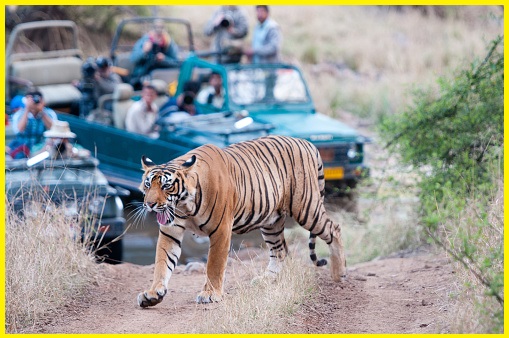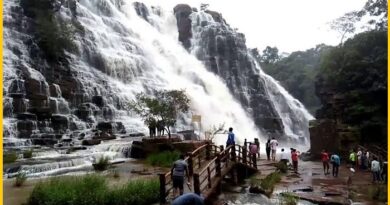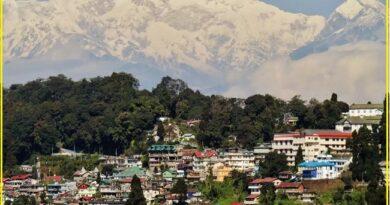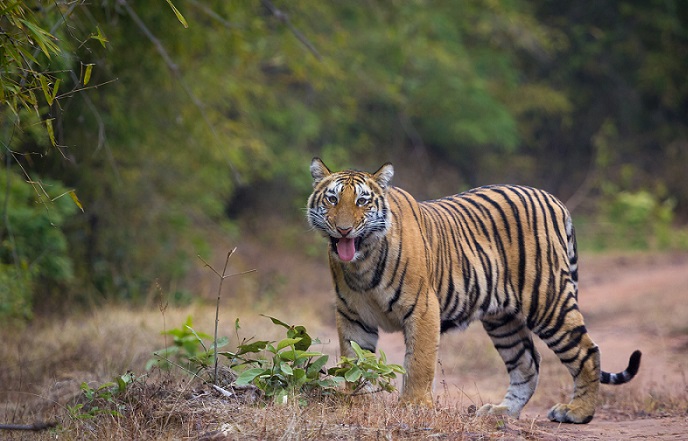The Best Holiday Trip- Ranthambore National Park Safari and Wildlife tour
Ranthambore National Park
Ranthambore National Park is one of the biggest and most renowned national parks in Rajasthan, Northern, India. The park is located in the Sawai Madhopur district, which is about 130 km from Jaipur. Once a famous hunting ground of the former Maharajas of Jaipur, today the Ranthambore National Park terrain is a major wildlife tourist attraction. It has drawn the attention of many wildlife photographers and lovers all around the world. The National Park covers an area of 1,334 km2. And is bounded to the north by the Banas River and to the south by the Chambal River. It is named after the historic Ranthambore Fort, which lies within the park. Ranthambore is known for its large tiger population. According to 2014, there were 62 tigers in Ranthambore. The landscape is dominated by numerous cenotaphs, ruins and abandoned settlements.
Ranthambore National Park safari
Ranthambore National Park and Tiger Reserve are one of the world’s best-known wilderness areas. Located 14 kilometres from Sawai Madhopur and at the junction of some of the geologically oldest mountain ranges-the Aravallis and Vindyas, The Ranthambore offers some of the best opportunities for sighting the magnificent tiger and other wildlife. The park consists of rolling hills and crags, meadows, lakes, dry-deciduous forest and an incredible variety of flora and fauna. Ranthambore national park animals list– Apart from the tiger, Travellers can also spot sloth bears, leopards, caracals, jackals, foxes and hyenas. The dainty chital, sambhar deer, the blue bull antelope or nilgai, rhesus macaque, langur and an incredible variety of birds amidst a setting of dhok, fig and banyan trees.

What to see in Ranthambore
Trinetra Ganesh Temple
The Trinetra Ganesh Temple is situated inside the Ranthambore Fort and is famous as one of the oldest temples in Rajasthan. It is the only temple in the entire world which houses the entire family of Lord Ganesha, and his statue consists of three eyes. This famous temple and its history back to 1299 when a war was being fought between King Hameer & Ala-ud-din Khilji inside Ranthambore Fort. King Hameer was an ardent devotee of Lord Ganesha and never forgot to offer his prayers to Lord Ganesha. One day, Lord Ganesha appeared in King Hameer’s dreams and told him that he would be free of all troubles the next morning. In the morning, surprisingly, a symbol of Lord Ganesh appeared on one of the walls of the fort, and more surprising was that the war ended all of a sudden on its own.
Also, read- Three Whale Rock Thailand-Know the mystery behind these rock
Kachida Valley
Kachida Valley is located close to the Ranthambore National Park in Rajasthan. This area is famous for a large population of panthers, who migrated here to avoid conflicts with the Royal Bengal Tigers. The place is also home to a sizable population of sloths, who are attracted towards the bee hives & large ant hills here. You can reach Kachida Valley only via a Jeep Safari.
The Raj Bagh Ruins
The Raj Bagh Ruins are situated between Padam Talo & Raj Bagh Talo in Ranthambore. These ancient ruins are stone structures standing in the form of arches, palaces, domes & steps, mystery & history to the surroundings. These impressive ruins are surrounded by dense jungle, which often serves as the hideout for Royal Bengal Tigers. One can admire these ruins from a distance during your wildlife jeep safari.

Lakarda and Anantpura
Lakarda and Anantpura are 2 regions in Ranthambore National Park, inhabited by an impressive number of sloths, who are attracted towards the ant hills that are scattered all over the landscape. Sometimes, visitors can also spot the Indian striped Hyenas, although they are very few.
Top Things to do in Ranthambore
Gypsi safari
A Gypsy in Ranthambore is available for morning and evening safaris. There are 10 ecotourism zones in Ranthambore, and a jeep safari is allowed in each of them. Jeep Safari is the best way to enjoy wildlife sighting in Ranthambore National Park. It is ideal for tiger sighting, birdwatching and photography in Ranthambore. Jeeps are to be online booked 90 days in advance. It is available between 1st October and 30th June.

Canter Safari
Canter Safari is one of the best ways to explore the rich wildlife of Ranthambore National Park. It is a 20-seater open bus that operates in some of the safari zones in Ranthambore. Canter is best for a large group of visitors. Canter Safari in Ranthambore National Park should be booked well in advance. Both morning and evening canter safaris are available at Ranthambore, between 1st October and 30th June.
Bird watching
Along with a rich variety of fauna, the park is also home to many birds, making it an important birding destination in India. It is home to around 320 species of birds that include serpent eagle, waterfowl, painted spurfowl, sarus crane, bronzed-winged jacana, kingfisher, nightjar, painted sandgrouse, and great-horned owl. Numerous migratory birds in winter. Most of the birds inhabit around-Padam Talao, Malik Talao and Rajbagh Talao.
Ranthambore National Park holidays
The Ranthambore tour and getaway is the best wildlife holiday experience in India. Ranthambore tours can be started from all major destinations in the world that cater to a variety of wildlife enthusiasts, both domestic and international. Ranthambore holidays will feel like you’re waking up in Rudyard Kipling’s head, where sloth bears, on which Baloo was based, are seen in the park. Choose from our wide range of family-friendly wildlife tours, photography, corporate outings, honeymoon, educational tour, and tiger or birdwatching tours in Ranthambore national park.

How to Reach National Park
The National Park is open from October to June and is accessible by rail from Delhi, Mumbai and Jaipur and by road from Jaipur and Delhi. Sawai Madhopur has a range of accommodations to suit every budget. Travellers can stay back for a few days to soak in the sunshine and calm of the forests. Jaipur is the nearest airport to the Ranthambore national park.



